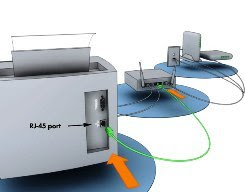There are two types of configurations required to set the access shared folders offline available, one for data server and other for client computer.
Configuration on Data Server
- First locate the folders that you would like to share or make new folders then share these folders so they can be accessible to any one on the network.
- Now right click on that folder and click on the option "Sharing and security".
- A small dialog box will appear with the title "data properties". Under the "Sharing" tab, select the check box "Share this folder on the network" under the "Network sharing and security".
- Now set the share level permissions that you want to give the users on every folder. Enable cache of share folders by click on cache button (by default it will be enabled).
- On the client computer, first open My Computer then click on Tools.
- In Tools menu bar, click on Folder Options, a window will appear with the title Folder Options.
- Under the Offline File tab, check the option Enable Offline File. Here you can choose the synchronization process "Synchronize all offline files when logging on", "Synchronize all offline files before logging off" and others.
- Click on Apply button to save the settings and then Ok button to close this window.
- Now sitting on the client computer, try to access the shared folder from the data server.
- First Right click on the shared folder and Click on Make available offline.
- To synchronizing the offline work from client computer to data server, again open My Computer then click on Tools. Click on Synchronize then click on synchronizing button.







